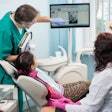
NEW YORK (Reuters Health), May 29 - Getting adequate amounts of vitamin A during pregnancy may reduce the risk of having a child with cleft palate, Norwegian researchers report.
Infants born to women who consumed the most vitamin A were half as likely to have a cleft palate as children whose mothers consumed the least, Anne Marte W. Johansen of the University of Oslo and her colleagues found.
"This supports other evidence that a healthy and varied diet during pregnancy is important," Johansen told Reuters Health via e-mail.
Both excessive and deficient vitamin A intake have been tied to "a wide range of malformations" in humans and animals, Johansen noted. In humans, she added, the level at which vitamin A may have adverse effects on fetuses is not known, but "it is generally agreed that an intake up to 3 mg per day is safe."
Norwegians have a fairly high intake of vitamin A, Johansen and her team note in the American Journal of Epidemiology, while the incidence of cleft lips and/or cleft palates among Norwegian babies is relatively high, they add.
To investigate the relationship between vitamin A and orofacial clefts, the researchers compared 535 women who gave birth to a child with a cleft palate only or cleft lip with or without cleft palate between 1996 and 2001 and 693 women who delivered children without the defect during that time period.
Women in the top 25% for vitamin A consumption were 53% less likely to have a child with cleft palate alone than those in the bottom 25%, the researchers found. Intake of vitamin A was not related to the risk of cleft lip with or without cleft palate, supporting the theory that the two cleft types have different causes.
"Even though vitamin A may reduce the risk of cleft palate, it is important to avoid particularly high doses," Johansen added. "As for other vitamins, too little and too much vitamin A can be harmful for the fetus."
However, among the women in the top 5% of vitamin A consumption, who consumed an average of about 3.8 mg daily, there was no increased risk of clefts.
Maternal smoking, which is fairly common in Norway, could be a factor in the high rate of oral clefts among children born in the country, Johansen commented.
American Journal of Epidemiology, May 15, 2008.
Copyright © 2008 Reuters Limited. All rights reserved. Republication or redistribution of Reuters content, including by framing or similar means, is expressly prohibited without the prior written consent of Reuters. Reuters shall not be liable for any errors or delays in the content, or for any actions taken in reliance thereon. Reuters and the Reuters sphere logo are registered trademarks and trademarks of the Reuters group of companies around the world.


















